The Cm6 Guitar chord (C minor 6th) is a beautiful, haunting chord that adds complexity to any minor chord progression. It’s commonly used in jazz, classical, and even some pop music, where it provides a touch of sophistication and melancholy. This chord is a great way to add more color and depth to your playing.
What is a Cm6 Guitar Chord?
The Cm6 chord is essentially a C minor chord with an added major sixth. This combination gives it a unique blend of darkness (from the minor third) and brightness (from the major sixth). It consists of four notes: C, E♭, G, and A.
Cm6 Formula:
- Root (C)
- Minor third (E♭)
- Perfect fifth (G)
- Major sixth (A)
How to Play the Cm6 Guitar Chord
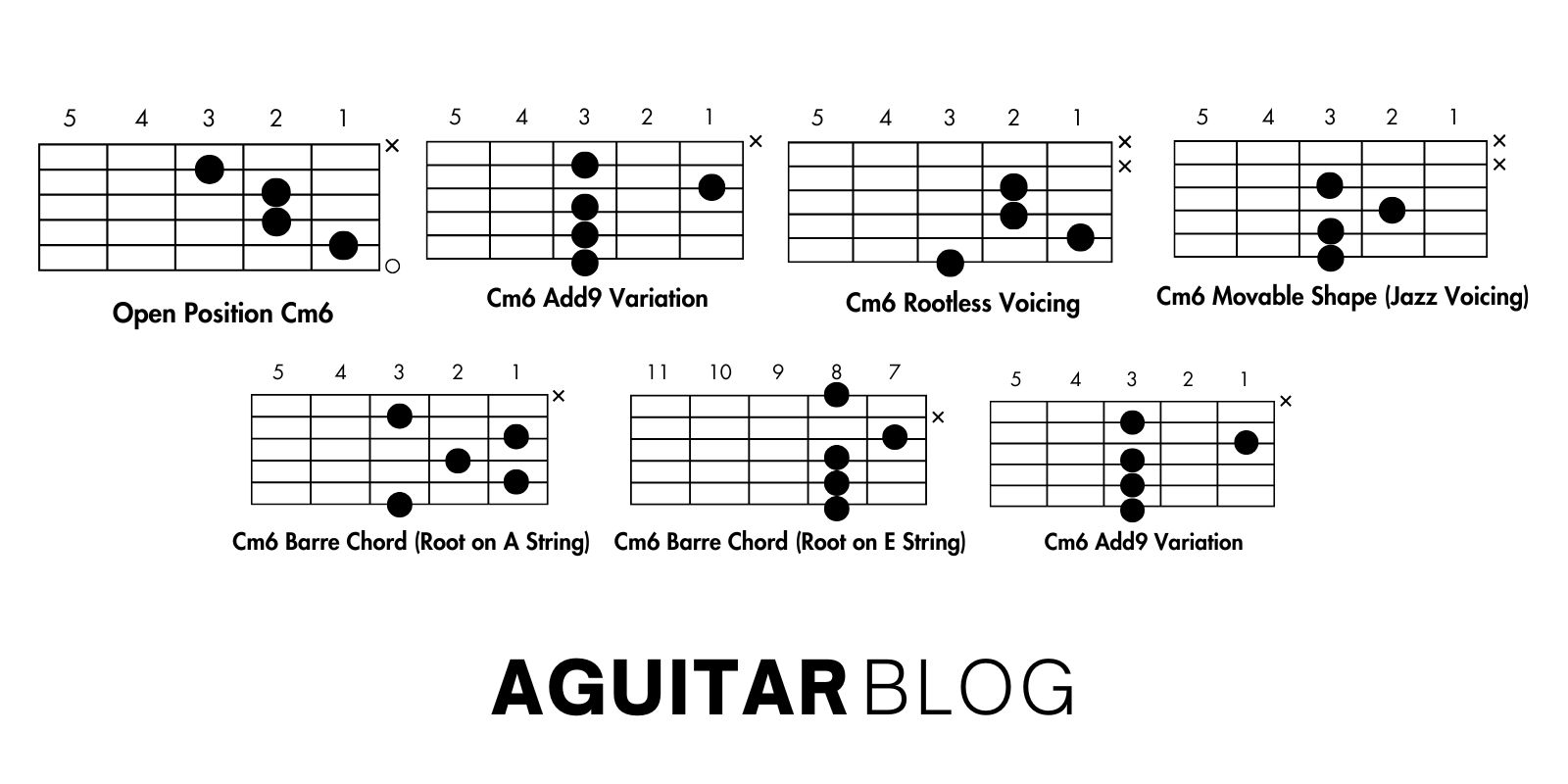
The Cm6 chord (C minor 6) is a soulful and jazzy chord, combining the melancholy of a minor chord with the warmth and subtle tension of the 6th degree (A). It’s widely used in jazz, blues, and even classical music, offering unique tonal color. Below are several variations of the Cm6 chord on the guitar, along with detailed instructions on how to play them.
Open Position Cm6
This voicing is delicate and warm, ideal for soft, emotional passages in ballads or jazz arrangements.
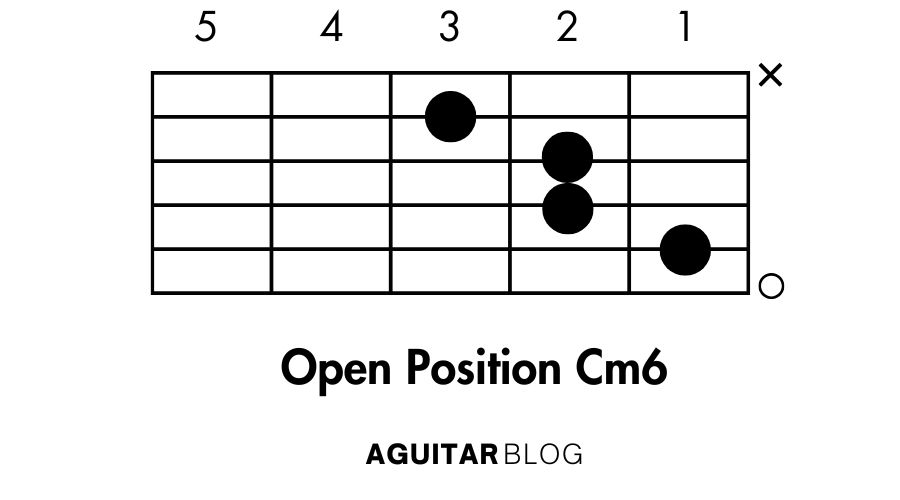
How to Play:
- Mute the low E string.
- Place your ring finger on the 3rd fret of the A string (C note).
- Place your middle finger on the 2nd fret of the D string (G note).
- Place your index finger on the 1st fret of the B string (A note).
- Let the high E string ring open.
Cm6 Barre Chord (Root on A String)
This voicing has a compact and jazzy tone, making it perfect for rhythm guitar in jazz or blues contexts.
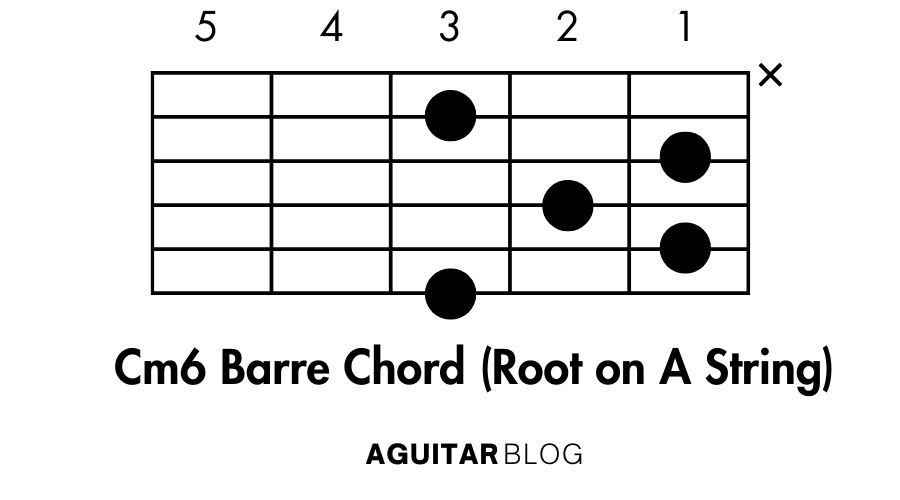
How to Play:
- Mute the low E string.
- Place your index finger across the 1st fret of the D, G, and B strings.
- Place your ring finger on the 3rd fret of the A string (C note).
- Use your middle finger on the 2nd fret of the G string (A note).
- Strum all strings except the low E.
Cm6 Barre Chord (Root on E String)
This variation has a smooth and balanced tone, great for comping in jazz standards.
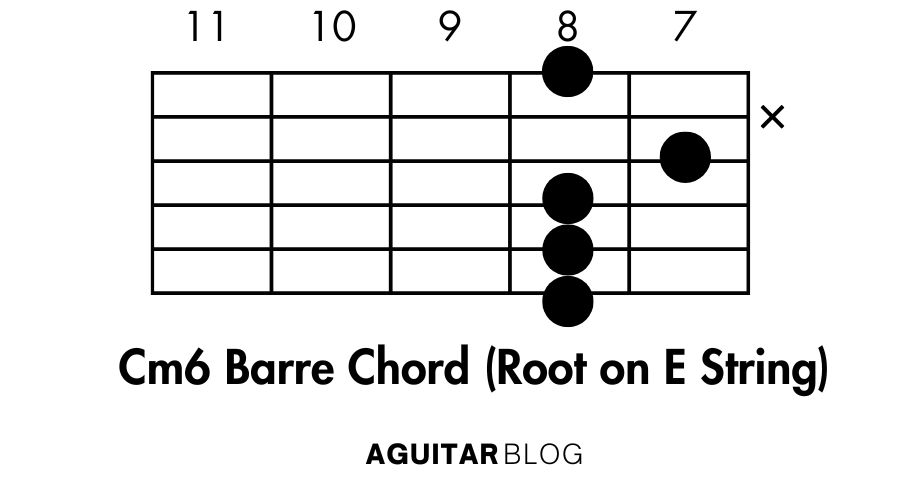
How to Play:
- Place your index finger across the 8th fret on the D, G, B, and high E strings.
- Use your middle finger on the 8th fret of the G string (A note).
- Place your ring finger on the 10th fret of the A string (C note).
- Strum from the A string down.
Cm6 High Voicing
A bright and melodic voicing, ideal for delicate solos or chord melodies.
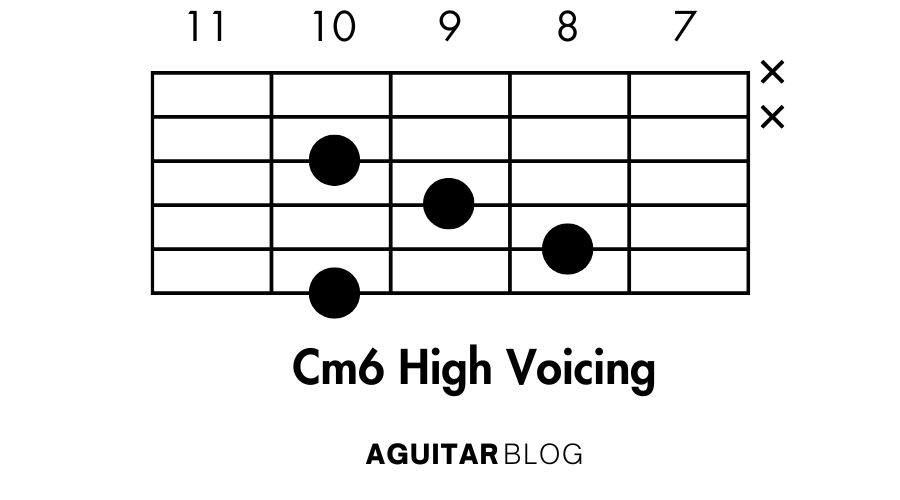
How to Play:
- Mute the low E and A strings.
- Place your index finger on the 8th fret of the G string (A note).
- Use your middle finger on the 9th fret of the D string (G note).
- Place your ring finger on the 10th fret of the B string (C note).
- Use your pinky on the 10th fret of the high E string (E note).
- Strum only the D, G, B, and high E strings.
Cm6 Movable Shape (Jazz Voicing)
A compact and jazzy voicing, perfect for intricate progressions and rhythmic comping.
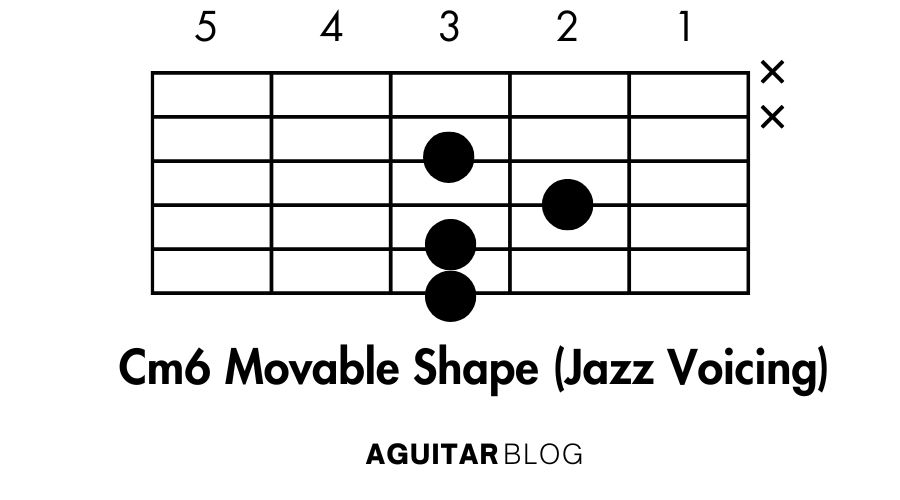
How to Play:
- Mute the low E and A strings.
- Use your index finger to press the 2nd fret of the D string (G note).
- Place your middle finger on the 3rd fret of the G string (A note).
- Use your ring finger and pinky to press the 3rd fret of the B and high E strings (C and E notes).
- Strum only the D, G, B, and high E strings.
Cm6 Rootless Voicing
A minimalist voicing that works beautifully in ensemble playing, especially when paired with a bassline covering the root.
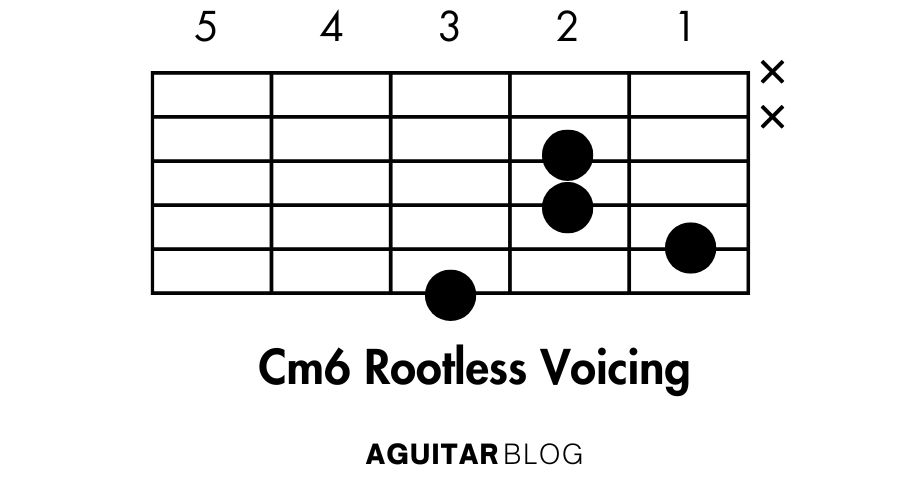
How to Play:
- Mute the low E and A strings.
- Use your index finger to barre the 2nd fret on the D and G strings (G and A notes).
- Place your middle finger on the 1st fret of the B string (A note).
- Place your pinky on the 3rd fret of the high E string (E note).
- Strum only the D, G, B, and high E strings.
Cm6 Add9 Variation
This lush voicing adds a suspended quality, making it excellent for smooth jazz or dreamy interludes.
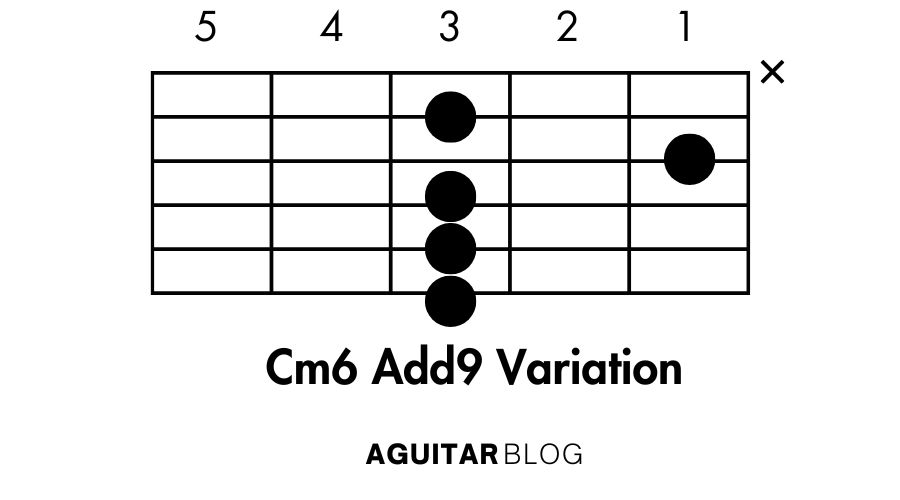
How to Play:
- Mute the low E string.
- Place your index finger on the 1st fret of the D string (A note).
- Place your ring finger to barre the 3rd fret of the G, B, and high E strings (C, E, and G notes).
- Strum all strings except the low E.
Top Songs Featuring the Cm6 Guitar Chord
The Cm6 chord is a versatile addition to your musical toolbox, often found in jazz, blues, and soulful ballads. Its rich and emotional tone provides a unique flavor to chord progressions, making it a favorite among composers. Here’s a curated list of five songs where the Cm6 chord takes center stage, along with tips on how it enhances each track.
“Misty” – Erroll Garner
Why Cm6 Fits:
A jazz classic, “Misty” is drenched in lush, sophisticated harmonies. The Cm6 chord adds a tender, heartfelt touch, perfectly complementing the song’s dreamy melody.
How to Use:
Play the Cm6 in the open position (X 3 2 2 1 0) during the verse to emphasize its gentle, melodic charm.
“Autumn Leaves” – Nat King Cole
Why Cm6 Fits:
This jazz standard thrives on subtle yet intricate harmonic movements. The Cm6 chord introduces a sense of warmth and nostalgia, enhancing the song’s seasonal melancholy.
How to Use:
Use the barre shape (X 3 1 2 1 3) in the intro to achieve a smooth, flowing transition between chords.
“Summertime” – George Gershwin
Why Cm6 Fits:
This sultry jazz piece uses minor chords extensively to create an evocative atmosphere. The Cm6 chord elevates the progression with its rich and resonant sound.
How to Use:
Play the high voicing (X X 10 9 8 10) during the chorus for a bright yet haunting tone.
“Black Coffee” – Sarah Vaughan
Why Cm6 Fits:
This moody blues-jazz classic makes heavy use of minor and extended chords to convey raw emotion. The Cm6 chord amplifies the song’s deep, introspective vibe.
How to Use:
Incorporate the movable shape (X X 3 2 3 3) in the verse for a compact, jazzy feel that complements the vocal line.
“Moon River” – Andy Williams
Why Cm6 Fits:
While primarily a ballad, “Moon River” benefits from the subtle sophistication of the Cm6 chord, adding depth to its dreamy, flowing melody.
How to Use:
Play the rootless voicing (X X 2 2 1 3) during the bridge for a warm, understated touch.
The Cm6 chord is a gateway to rich, emotional tones that can elevate any song, whether it’s a jazz classic or a soulful ballad. Its versatility and depth make it a must-learn for guitarists looking to add sophistication to their playing.
For more insights, lessons, and inspiration, keep tuning in to Aguitar Blog — your trusted companion on the journey to mastering guitar, one chord at a time.
SEE ALSO RELATED C CHORDS